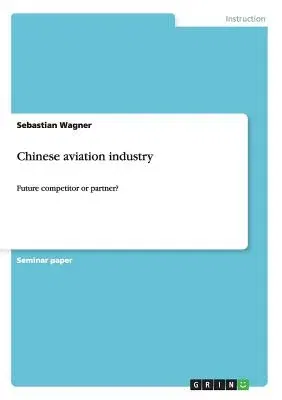Seminar paper from the year 2014 in the subject Instructor Plans:
Transportation Professions / Air Transportation / Logistics, grade: 1,7,
University of Applied Sciences Wildau (Wildau Institute of Technology),
course: Aviation Management 2012, language: English, abstract: Actually,
a country where flying is affordable for only top 8 percent of the
population is beneath any notice. But not in the case of the country
called China. Recent years have seen a thriving Chinese economic
development which has brought a huge demand for aviation business. The
aviation market in China is expected to double in size about every eight
years. As expansive as the market may seem today, it is still in its
infancy. As a result, business aviation, private aviation, emergency,
industrial aviation are expected to embrace for substantial growth
potential. Today, the Chinese economic miracle has been fuelled in large
part by a flood of foreign investment. However, the influence of Chinese
government is extremely present and restricting the aspiring industry.
Since China has been a socialist country, the leaders in Beijing play a
predominant role in nearly every single sectors of Chinese economy. In
contrast, government policies have been very supportive of the industry
and, unsurprisingly, it has yielded positive results. The aim of this
research paper is to analyze present capability and potential of Chinese
aviation industry and to identify its future challenges. The key
questions to be answered in this context are: What are recent
developements of Chinas aviation policies focusing on airline
consolidation and how does the domestic airline and manufacture
framework look like? Do endemic manufacturers have the ability to become
a serious competitor to persist on the global stage and what are current
challenges of Chinese Aviation industry? In order to answer these
questions I am goiig to examine the evolution of Chinas aviation polices
focusing on airline consolidation and the efforts


